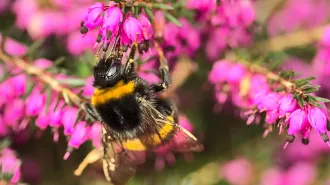A family of beetle mites may be the first animal lineage to have abandoned sexual reproduction and then reevolved it.
That’s the conclusion of a study of the mites’ evolutionary history as determined by DNA analysis, says Roy Norton of the State University of New York in Syracuse.
The Crotoniidae mites perpetuate their species through the usual joint efforts of males and females. Yet when Norton and researchers from Darmstadt Technical University in Germany studied DNA to trace a family tree for certain mites, the Crotoniidae ended up as a relatively recent twig on a bigger branch bristling with asexual lineages. Analyzing the physical structures of the mites leads to the same conclusion, says Norton.
The tidiest way to explain the tree’s pattern is that Crotoniidae sex disappeared long ago and then somehow reemerged, he and his colleagues say in a paper published in the April 24 Proceedings of the National Academy of Sciences.
The team concludes that the mites represent “a spectacular case” of breaking a supposed law of evolution that says that when complex traits disappear, they’re gone forever. However, researchers have claimed other exceptions. Another team reported the reemergence of sex in a plant—a hawkweed (Hieracium pilosella).
Norton, Darmstadt’s Katja Domes, and their colleagues analyzed three genetic sequences from each of 30 species of beetle mites. The study focused on the Desmonomata group, including Crotoniidae and large clusters of asexual species. In the asexual mites, mothers have daughters almost exclusively. The males that occasionally turn up don’t participate in procreation.







